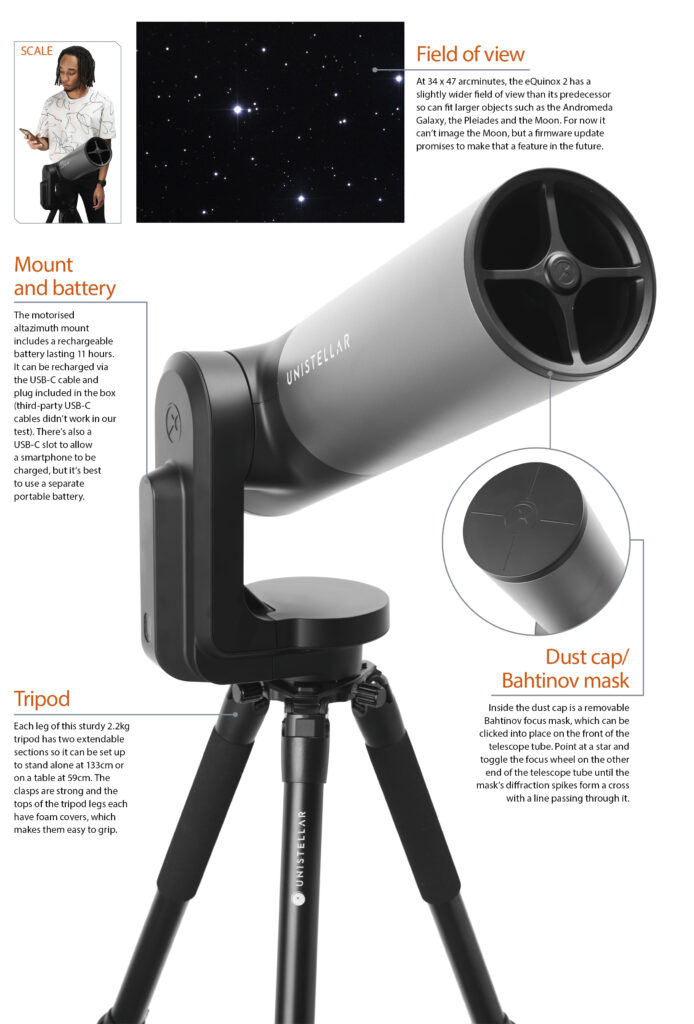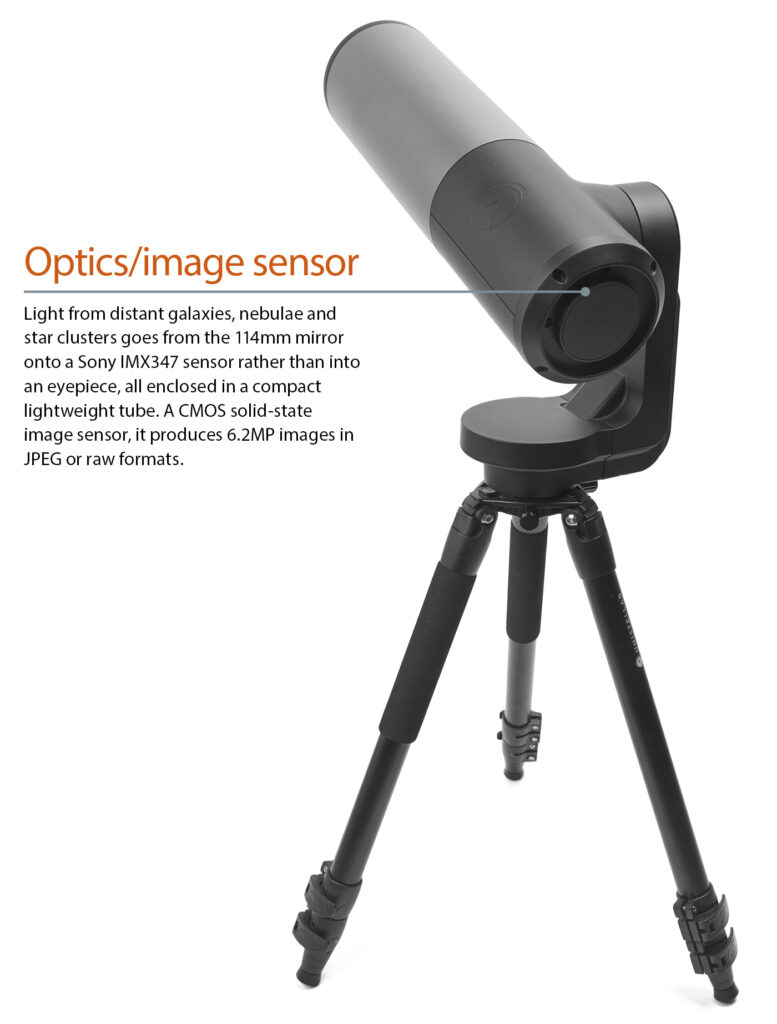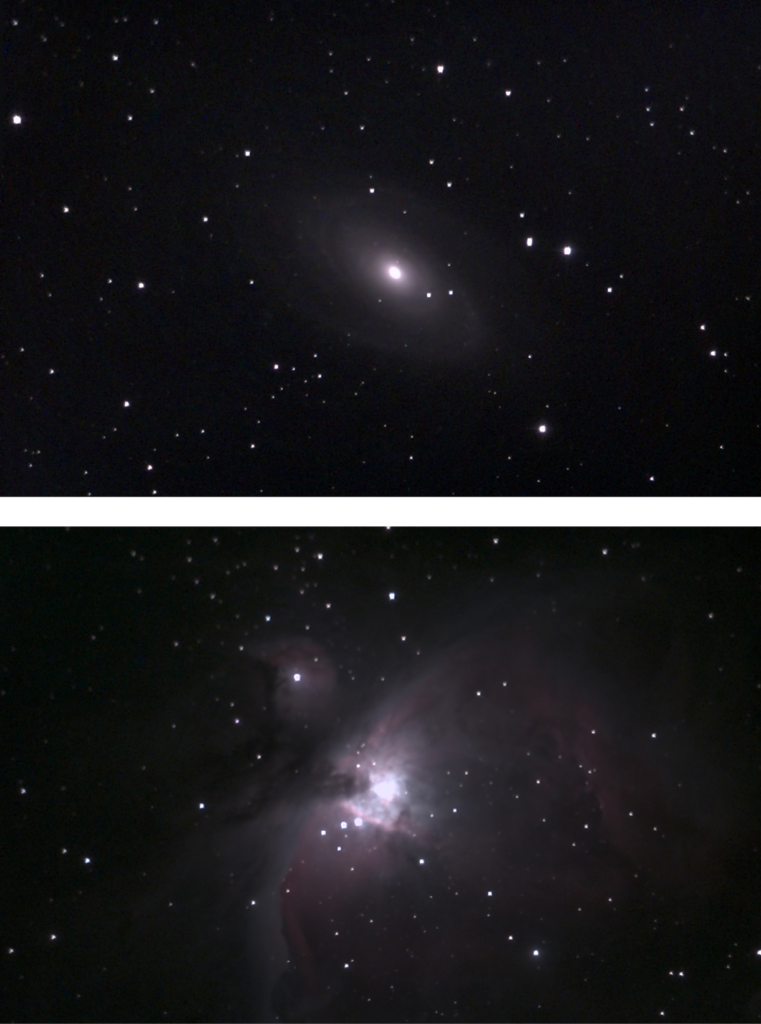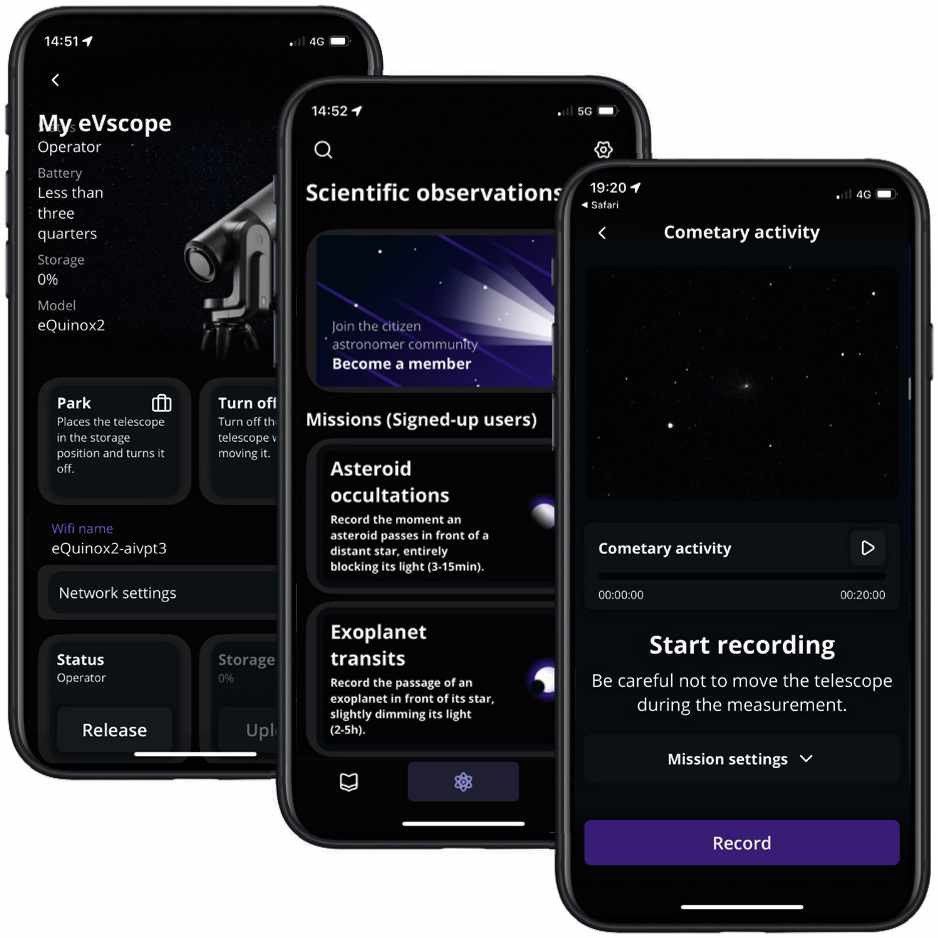FIRST LIGHT
Unistellar eVscope eQuinox 2
Powerful, light pollution-busting smart scope for painless one-click imaging
VITAL STATS
• Price £2,199
• Optics 114mm (4.5-inch) reflector
• Focal length 450mm, f/4
• Sensor Sony Exmor IMX347
• Mount Motorised single-arm, altaz, Go-To
• Power In-built lithium-ion rechargeable battery
• Tripod Aluminium, adjustable height
• Ports USB-C for power; USB-A for charging
• App control Unistellar (Android and iOS)
• Weight 9kg
• Supplier Unistellar SAS
• Email contact@unistellaroptics.com
• www.unistellar.com
Smart telescopes like the Unistellar eVscope eQuinox 2 have a lot in common with the smartphones used to control them. This new second-generation version of Unistellar’s most affordable smart telescope comes with upgraded electronics, a new sensor and lots of new features – just as the latest smartphones tend to offer every year. But there are some genuine reasons to invest in this latest and greatest smart telescope.
As with its predecessor, eQuinox 2 has no eyepiece so no way of getting the original photons from stars, galaxies and nebulae into your eyes. This is about astrophotography. At its core, the eQuinox 2 is a 4.5-inch (114mm) reflector telescope mounted on a motorised altazimuth mount that autonomously aligns with, and tracks, the night sky.
Inside is the latest Sony IMX347 image sensor, which is used to take short exposures of deep-sky objects. Its onboard computer then stacks those images in real time, gradually revealing an ever-clearer image, with greater contrast, on connected smartphones and tablets. It’s then easy to share framed (and auto-captioned) images and JPEGs on social media, though it’s also possible to take lossless images in raw formats to store on the eQuinox 2’s 64GB hard disc.

Easy does it
If you think smart telescopes like the eQuinox 2 are controversial then you may be behind the times. It’s modelled on how most robotic professional telescopes work and, besides, it’s difficult to imagine that the cutting-edge Autonomous Field Detection technology it uses won’t soon dominate the telescope market. Autonomous Field Detection is a thing of beauty. With its nine-hour onboard battery recharged using a USB-C cable and its lens cap removed, the eQuinox 2 images the stars above and plate-solves them with a database, automatically aligning in seconds.
If you’ve ever been frustrated when aligning telescopes, the eQuinox 2 is aimed at you. The only time it fails is if there’s cloud, but even then it has to be thick cloud as, in our test, it aligned even when barely any stars were visible to the naked eye. However, it’s not a completely autonomous affair; before making observations, it’s wise to choose a bright star from its 37-million-strong database and use the Bahtinov focus mask hidden in the lens dust cap to achieve a sharp image by aligning the diffraction spikes of the chosen star.

Top murk-mastery
The eQuinox 2 is easy to use and that’s partly thanks to an all-new version of Unistellar’s control app that offers over 5,000 celestial objects ranked according to your location. With the eQuinox 2 pointed at the Orion Nebula, its Enhanced Vision technology performs a slow reveal of the detail within this huge star-forming region. Every few seconds, dustier detail, brightness and incredible colour within 6.2MP images is evident – and all this from the centre of a light-polluted city. Light pollution does make a difference when it comes to fainter nebulae, as does the sky transparency, though the main criticism of eQuinox 2’s images will be that they’re a little soft.

What this version can do that the previous couldn’t is photograph larger objects, such as the Andromeda Galaxy and the Pleiades, thanks to its slightly wider 34 x 47-arcminute field of view. Another new feature on the eQuinox 2 is planet mode. It’s something new for smart telescopes, which until now have been strictly deep-sky-oriented. During testing, only Mars was visible to us, though the results were lacklustre. Rather than the Enhanced Vision technique, planets use ‘lucky imaging’, whereby lots of very short exposures are taken in the hope of one being taken when the atmosphere is calm. Alas, that didn’t prove possible.
Despite some new features and small upgrades, there are three reasons to buy the eQuinox 2: its automatic alignment, its incredible sensitivity (a limiting magnitude of 16 in light-polluted cities and 18.2 in rural skies) and its ability to pretend that light pollution isn’t the big problem we know it is. If you live in or near a city and you want to get more from the deep sky, the eQuinox 2 is a fine way to go about it.
Be a citizen scientist

Unistellar’s eVscope range of smart telescopes – of which the eQuinox 2 is the latest – are increasingly being used to crowdsource astronomical observations. Over 30 eVscope users around the world observed the impact of DART on Dimorphos and the behaviour of the asteroid immediately after the impact. Their findings were gathered and the users credited as co-authors on a paper published in the journal Nature in March 2023.
It’s a big moment for smart telescopes, and scientific observations are now front and centre of the new Unistellar app. As soon as you’ve signed up, you can attempt to capture an asteroid occultation to help NASA’s Lucy mission, confirm exoplanet transits spotted by NASA’s Transiting Exoplanet Survey Satellite (TESS) and make observations of passing comets. In our test, it worked well for collecting data on comet C/2022 E3 ZTF for 20 minutes, though it’s also very simple to enter your own coordinates if you merely want to image a comet or something off-catalogue.
KIT TO ADD
1. Unistellar eVscope backpack
2. Portable battery to keep a smartphone charged up
3. Instagram app to share images
VERDICT
